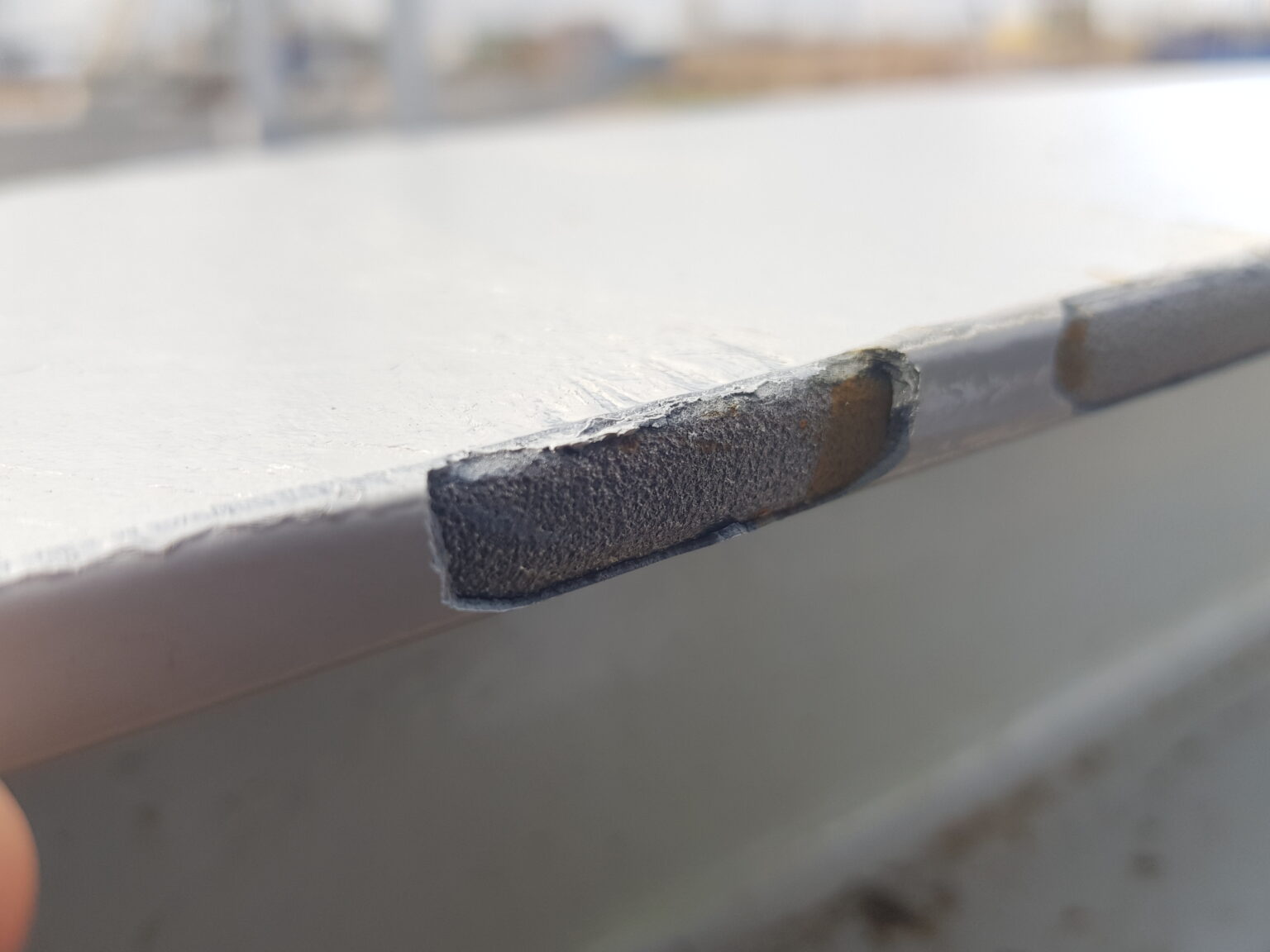I often receive inquiries, where customers ask for a quote for the final acceptance of structures painted by subcontractors. There are few reasons, why. More often than not, there are doubts about the quality of execution. It is not clear, what to do in such cases, so you need a consultation with a specialist. Other times, issues come to light after the elements have already been delivered to the construction site. It is then crucial to assess the extent of the damage and think of a way to repair it. Often times, people just need a ‘paper’ confirming that the work has been done correctly.
What is the value of such acceptance and documentation, from my point of view?
NONE.
During the final inspection, we can see (as the name suggests) only the final result. We can check the thickness of the dry film and focus on the visual aspect. It is known that the scope of full coating examination is much wider, but I focus on customer expectations from the inquiries. Is it enough? For a person who thinks that industrial painting is only for aesthetics, probably yes. For a specialist who has to accurately assess the work done, it is not enough!
What are we missing then? How can it affect the durability of anti-corrosion protection?
Above all, we miss all the vanishing works and inspections of the following:
- CLEANLINESS OF THE SUBSTRATE – Lonic contamination (soluble salts), oily/greasy surface, dust, dew/ice. If left on the surface, they can (and most likely will) result in reduced or no paint adhesion at all. What is interesting, some defects may appear after a long time, i.e. in several months and a very remote location (South Africa, Brazil, Canada), where the repair costs will be astronomical.
- LEVEL OF SUBSTRATE PREPARATION – Welding spatter, sharp edges, rolls, porous welds. These areas are hard to protect – impossible to penetrate with paint and it is false that the paint will “cover” some defects. Corrosion will appear sooner rather than later.
- CLIMATIC CONDITIONS/PROPER VENTILATION DURING APPLICATION – They can disturb the hardening of the coating, interlayer adhesion, layer cohesion. If they do not comply with the requirements of technical data sheets, we can expect delamination, cracking, blistering, etc.
- THICKNESS OF EACH INDIVIDUAL LAYER – It is worth to remember that each layer will maintain the properties, declared by the manufacturer, only within the thickness range specified in the technical data sheet. In industrial painting, more is not always better.
- TOUCH UPS – They are additional layers of paint, applied with a brush/roller, and other ways in hard-to-reach areas, on edges and joints. They allow you to achieve a full coating of the specified thickness, where the application by airless spray is difficult. Incorrect use will affect the aesthetics and speed up the degradation process of the coating.
- TIME FOR REPAINTING SUBSEQUENT LAYERS – It may directly affect intercoat adhesion. When exceeded, may result in delamination, flaking and peeling of the paint.
These, and other factors have a direct impact on the durability of anti-corrosion systems, i.e. on the time frame, after which the facility will need renovation. The only way to properly assess the quality of work is to do it during the process, which is why you need to involve the specialists, supervising the application of paint.
As an active entrepreneur, I understand the necessity to cut costs and to properly manage the company budget. Involvement of the inspector is a service and is billed as a service. After all, it is worth to remember that this will only be a fraction of the costs associated with the possible complaint.
From “real life” – get to know a specific case
In the attached photos you can see a fragment of a steel structure. The elements have been delivered to the construction site, and the whole construction is in the process of being assembled. The investor is concerned about the large amount of damage, associated with transportation and assembly. A specialist is also involved in a meeting with the contractor. After assessing the damage, we come to the conclusion that spherical shot with (probably) addition of sharp-edged shot was used for cleaning, which is a non-conformance according to the technical data sheets of the paints used and the specification. Moreover, the anti-corrosion system is significantly thicker at the edges, which, combined with poor bonding to the substrate caused by improper surface development, additionally reduces paint adhesion.


Results?
First off, poor image of the executive company. Everyone at the meeting knows that in order to remove the underlying defect, i.e. incorrect roughness, the cleaning process must be repeated, using the proper abrasive and paint application. Looking at the deadline for the investment, it is not possible – the assembly HAS TO and WILL be continued (you recognize that situation, right?). The contractor now faces costly repairs of the damage and an attempt to ‘sell’ the structure. And that will be a challenge, given that inspectors are already concerned about its state. Both sides will engage in a dispute, which will last a several months or years, they will appoint experts, and the case may end up in court. Neither side will benefit from this affair.
How this can be avoided?
The easiest way is to hire a specialist at an early stage of the project. They will analyse the objectives of the specification, point out all weak points, draw attention to clauses that may generate additional costs, train the staff and conduct an audit of subcontractors. Thanks to this, the further works on the project will run smoothly and subsequent appointments will be occasional, only to upkeep the already established level of service.
Author of the text: Wojciech Taranczewski, Anti-corrosion Specialist

